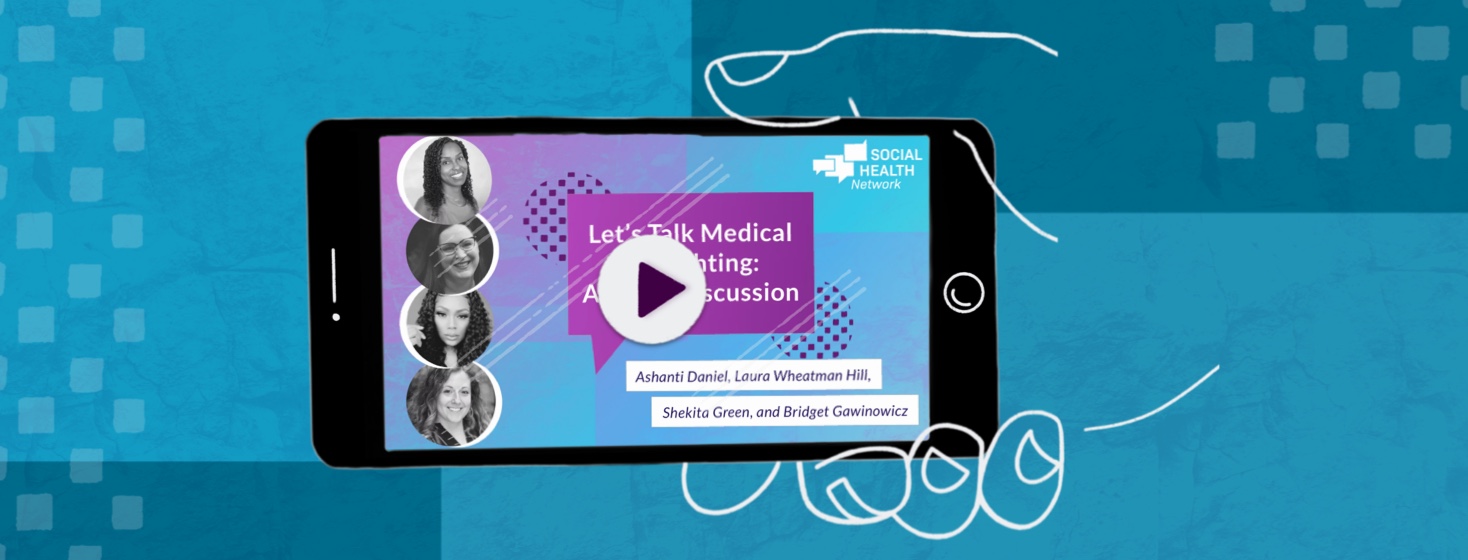Let’s Talk Medical Gaslighting: A Panel Discussion
In this replay session, we aim to not only learn about medical gaslighting but also identify examples in our own lives when we have been gaslighted. We hear from Patient Leaders about how they have dealt with it, and we talk about what we can do as a community to stop it in its tracks.
Key takeaways:
- Medical gaslighting is used to describe patients who have felt that their symptoms were labeled as insignificant or psychological ("all in your head") by healthcare providers. This can lead to delays in time-sensitive diagnosis and treatment.
- Many Patient Leaders have experience with medical gaslighting, and it can happen to anyone. It's especially common with lesser-known conditions, conditions with complicated diagnosis processes, or conditions that are not yet understood.
- Medical gaslighting can cause patients to have less faith in the healthcare system.
- Learning how to strongly advocate for yourself is an integral piece of combating medical gaslighting.
Meet the panelists:
Ashanti Daniel used to work as a registered nurse caring for critically ill and/or premature newborn babies. However, for nearly 5 years (since August 2016), her superpower has been living with disabling chronic illnesses as a single mother, finding the silver linings after having her world completely flipped upside down, and advocating for chronic illness WARRIORS as much as her illnesses have allowed.
Shekita Green is the mother of 2 teens, the wife of an Army Vet, and an entrepreneurial-spirited businesswoman. In January 2013, she began experiencing terrible nerve pain, back pain, and numbness in her fingers and toes along with piercing headaches. A month later, nausea. After a series of hospital visits and testing, she was diagnosed 2 months later with BBPV and began her journey as an owner-operator in WA state. She lived running operations however was left with Nystagmus and symptoms of vertigo. She relocated to Houston, TX to take over an office. She continued to put her all into work but was once again taken to the ER after a debilitating migraine. After her final testing which included a spinal tap and an MRI, she tested positive for the Aquaporin-4 antibody and was diagnosed with Neuromyelitis Optica.
Laura Wheatman Hill is a person, parent, and writer in Oregon. She has two kids, both of whom have their own "stuff" going on which requires a lot of her. In her own story, she has had migraines since she was a teen but didn't really know how best to treat them, mostly letting them "go away on their own." Becoming an advocate actually helped her get the help she needed to function better, just when her migraines were becoming more chronic. In addition, she was realizing that she had Restless Legs Syndrome, a condition she'd been gaslighted into believing didn't exist. Once she got a handle on her medications which were contributing to these two conditions, as well as her mental health, she was able to live an overall much healthier and happier life. She still gets migraines and is figuring out her best treatment plan. She still manages RLS. She still works on her mental and physical health. But, being an advocate and part of her community has been a huge gift to her.
Bridget Gawinowicz is a Director of Community Development at Health Union, where she's been working with the axial spondyloarthritis community since 2019. She also runs the company's Patient Leader Council, which helps get feedback on company projects from the patient leader's perspective to ensure all initiatives are patient-centered and accessible. She lives in Philadelphia with her boyfriend and 2 beloved rescues, Molly and Cookie.

Join the conversation